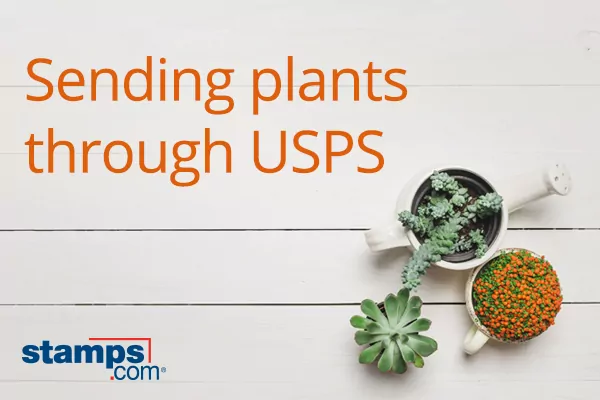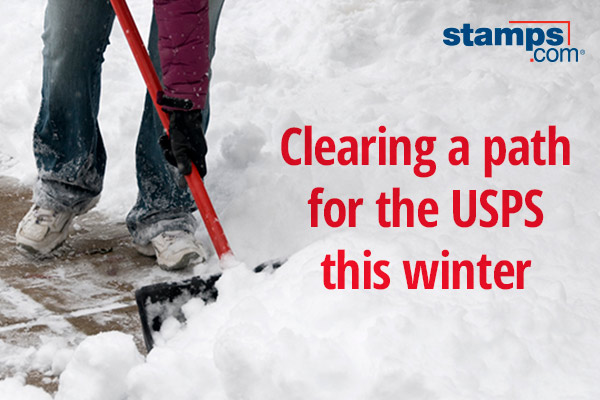
You’re in Arizona and interested in sending a cactus to a friend in New York. Or you’re in Minnesota and want to send a Japanese maple to your mother in Oregon. Can you do this?
You can mail certain plants within the United States. However, keep in mind that when mailing plants, flowers, roots, seeds, and trees, there are rules governing how and if they can travel through the mailstream. It’s important to note that you, as the mailer, have the responsibility to ensure your mailing activity does not violate any law. USPS Publication 14 is a great place to start.
Threatened and Endangered Plants
One reasons regulations are in place is to protect threatened and endangered species. Not sure if what you want to mail is protected? Take a look at this database of endangered plants maintained by the U.S. Department of Agriculture. Some threatened and endangered plants of California, for example, include the Baja rose (Rosa minutifolia), Santa Inez goldenbanner (Thermopsis macrophylla), and the Yreka phlox (Phlox hirsuta).
Pests and Diseases
Rules are also in place to ensure that plant pests and diseases do not spread and wreak havoc to industries and ecosystems. Therefore, for domestic mail, some plants that may be infested by insects or sickened by plant diseases may be subject to quarantine. Further information can be found at this USPS resource.
The Animal and Plant Health Inspection Service (APHIS) maintains a useful database of information on plant pests and diseases here: https://www.aphis.usda.gov/aphis/ourfocus/planthealth
It’s important to stay current to avoid penalties. Read up on pests. The coconut rhinoceros beetle, for example, detected in Hawaii, can do serious damage to coconut trees, and also feeds on commercial crops such as bananas, sugarcane, papayas, and pineapples. Citrus diseases like Citrus Black Spot and Sweet Orange Scab can also do damage to commercially important crops and production.
Other Domestic Guidelines
Individual states may have restrictions as well, so it’s always good practice to check with local plant health divisions before you mail any plant. For example, citrus plants are prohibited from entering California from other U.S. states. Fresh flowers of jade vine and Mauna Loa from Hawaii cannot be imported into the U.S. mainland and Alaska.
International Mail
For international mail, plants (along with seeds, plant materials, fruits and vegetables), are subject to the USPS prohibitions and restrictions as well as the quarantine regulations of the destination country. For example, you need a plant health certificate if you’re mailing plants, seeds, or bulbs to France, and the United Kingdom also requires an import permit issued for plant shipments. Individual country listings and restrictions can be reviewed here.
Preparing your shipment
When packing plants, the USPS requires the use of strong waterproof material, such as waxed Kraft paper, to maintain the moisture in the plant roots, but also to secure your mailpiece against leakage and damage during transit. Thorny plants should be wrapped in puncture-proof paper, and the tops of plant bundles should also be wrapped and covered.

Sometimes a record-setting snowstorm can cause the closing of schools, banks, state offices, businesses, highways and roads. However, as a Stamps.com user, you can help reduce further disruptions by preparing your home and business for USPS Pickups during wintertime.
Safety and accessibility are key issues for the USPS, so remember to keep your driveways and sidewalks clear of snow, sleet, slush, ice and debris. Check your home’s access points every day. Make sure you clear any piles created by a local snow plow. Spread sand and salt at USPS vehicle stopping points.
The USPS will aim to reach every address this winter season, but keep in mind that if an access area is deemed a hazard, a delivery or pickup may not occur. Whether it is a patch of ice or six feet of snow, winter conditions can cause serious injuries for carriers.
You can also assist USPS carriers by ensuring snow isn’t piled up on, against, and around porch steps, curbside mailboxes, overhangs, and centralized cluster box units. For curbside boxes, a good rule of thumb is to remove enough snow to ensure that the carrier can reach the box from the delivery vehicle.
Scheduling a Free USPS Pickup
The winter season is a great opportunity to reach out to loved ones with letters, cards and postcards. If you have a home-based business, it’s also a great opportunity to increase your holiday sales. Don’t let snow get in the way of that! Make sure your home is accessible, safe, and ready for the USPS so that you can have a stress-free mailing season.
As a Stamps.com user, you can schedule a free USPS Pickup of your Priority Mail, Priority Mail Express, and First Class Mail International packages.
Print your shipping labels using the easy-to-use Packages section of our software. After that, you can click “USPS Pickup” on the left side of your screen, in the blue navigation toolbar. Select the packages that need to be picked up and click on the gray “Schedule Pickup” button.
Before you hit “Submit,” you can enter any special instructions for your carrier and also specify the package location by selecting one of the following options: Front Door, Back Door, Side Door, Knock on Door/Ring Bell, Mail Room, Office, Reception, or Other. Just make sure access to the package locations is snow-free!